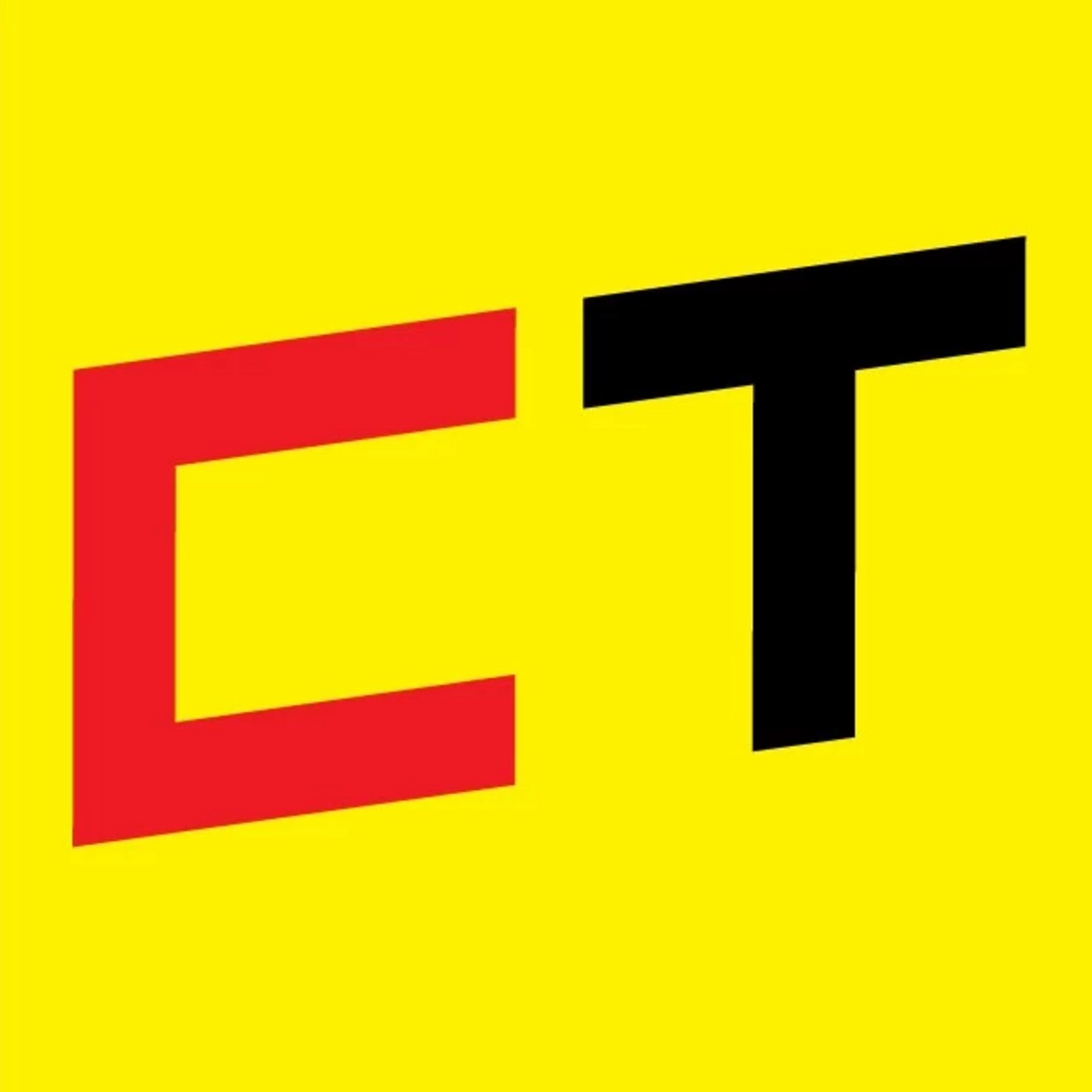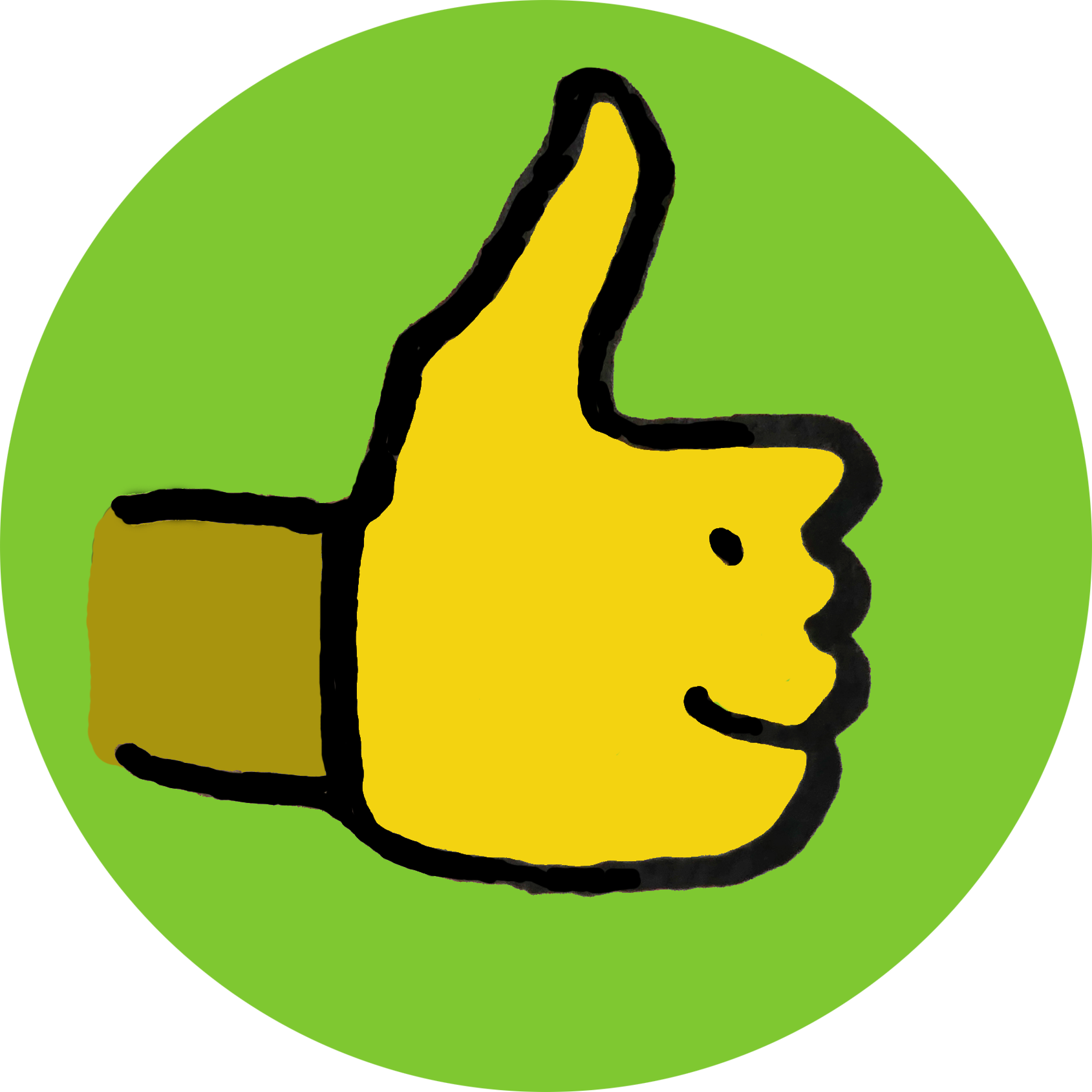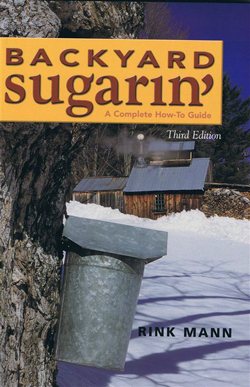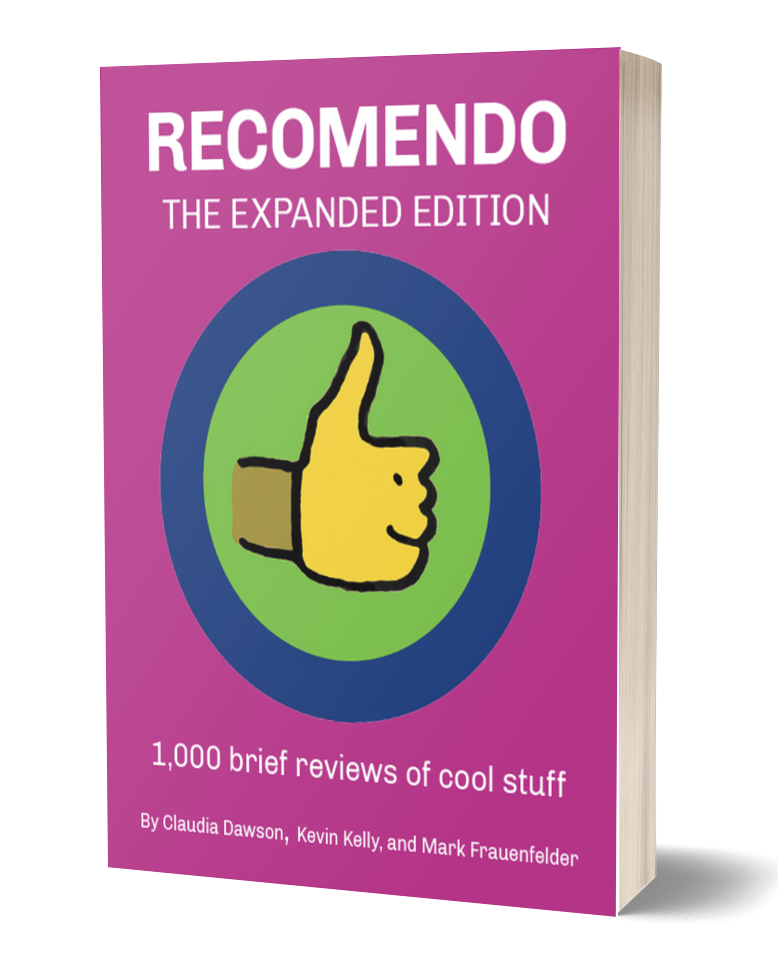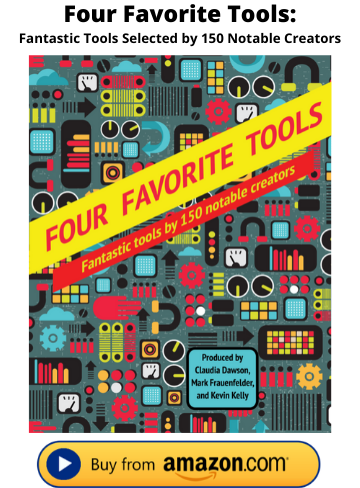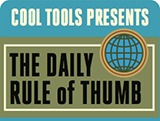12 December 2025
Gar’s Tips & Tools – Issue #207
Access to tools, techniques, and shop tales from the diverse worlds of DIY
10 Great Tool Gift Ideas
I love it when smart and talented makers that I follow give their annual tool recommendations. Case-in-point is Chris Notap’s tool gift guide for 2025. Every one of these is a winner, from the “I am totally ordering a bunch of these for presents” Olight iMini flashlight to the “I also have and highly recommend” DeWalt Oscillating Tool. Besides being a great tool, it will always have a soft spot in my heart ‘cause it’s the last tool my dear ol’ dad gave to me before he died. Other standouts include the Knipex 12” pliers wrench, which looks amazing, the Apple AirTag battery life extender, and the BlueDriver Bluetooth car scan tool.
Tips & Tricks for Using JB Weld
David Riddle’s video on J-B Weld (and J-B Kwik) is one of those tutorials that instantly upgrades your knowledge and approach to a material or process. His whole philosophy for using J-B Weld boils down to: Preparation is everything. Sand until you’ve got some adequate tooth, clean with acetone, mix on something non-absorbent (don’t use paper, card, etc.), spread a thin, even film (he uses a plastic knife like it was a tiny mason’s trowel), and warm the epoxy so it flows into the tooth instead of sitting on the bonding surface. No heavy clamping, no cardboard mixing trays, no wishing. Just clean surfaces, good texture, and slow-cure J-B Weld doing what it does best.
Some Practical 3D Printed Tools
As you likely know, there’s such a profusion of 3D printable tools out there (with many of them less than adequate as serious tool replacements) that the whole category of videos about them are easy to ignore. In this video, Peter Brown prints and tests five actually useful tools. The big aha for me here was the hex-key handles. I hate futzing with hex-keys, especially went you can’t bring proper torque to bear. These handsome little handles solve for that. Other stand-out prints include a snappy one-handed broom hook, a router bits organizer (from Zack Freedman’s Gridfinity system), and a rare earth magnet dispenser.
The History of the Allen Hex Key Wrench
We are all intimately familiar with that little L-shaped tool that carries a dude’s name. The Allen hex key wrench is so ordinary it’s basically shop and household wallpaper. Yet its impact on manufacturing and domestic life are undeniable. This episode of History of Simple Things (a channel I just discovered) explores how a small Hartford company, and an engineer named William G. Allen, helped de-thrown the slippery, injury-prone slotted screw and reshape modern manufacturing in the process. It’s a century-long tale of safety, standardization, and one odd bit of branding that stuck like Velcro and Kleenex. The video is a reminder that even the homeliest of tools have hidden lineages worth appreciating, especially the ones rattling around the bottoms of your kitchen junk drawers.
Regularly Rethinking Your Org
I’m not the most organized person in the world. I’m not terrible—I have my moments of clarity and tidy thinking, but I’m not obsessive or even particularly consistent about it. An example: For years I’ve had a 5-drawer wooden rolly cart by my workbench. I have most of my day-to-day tools on or around the bench, and this cart has additional tools and drawers organized by different activities: small supplies, painting, sanding, etc. Only the top drawer is tool-devoted, and over the years, it has become crammed with tools. Yesterday, I realized that the top drawer includes tools I use on a regular basis mixed in with tools I rarely use. This while some drawers in the cart are filled with materials I might only use once or twice a year. So, I moved those materials to shelves and created two tool drawers: one for everyday tools, one for special-use tools. I can already tell what a difference this will make as I quickly reach for a tool and don’t have to spend 5-minutes shifting and untangling stuff to get it in hand. The takeaway for me is that I’m going to start re-organizational thinking on a regular cadence (every quarter?). Pick some area of my shop and ask myself: Is this really the right system? How am I actually using the space and the tools, supplies, and materials within it? What can I improve?” I don’t do this type of thinking nearly enough. Do you?
Maker’s Muse
Some real eye-opening and inspiring ideas here for gates, doors, windows, skylights, pool covers, and more.
Do You Need an Artistic License?
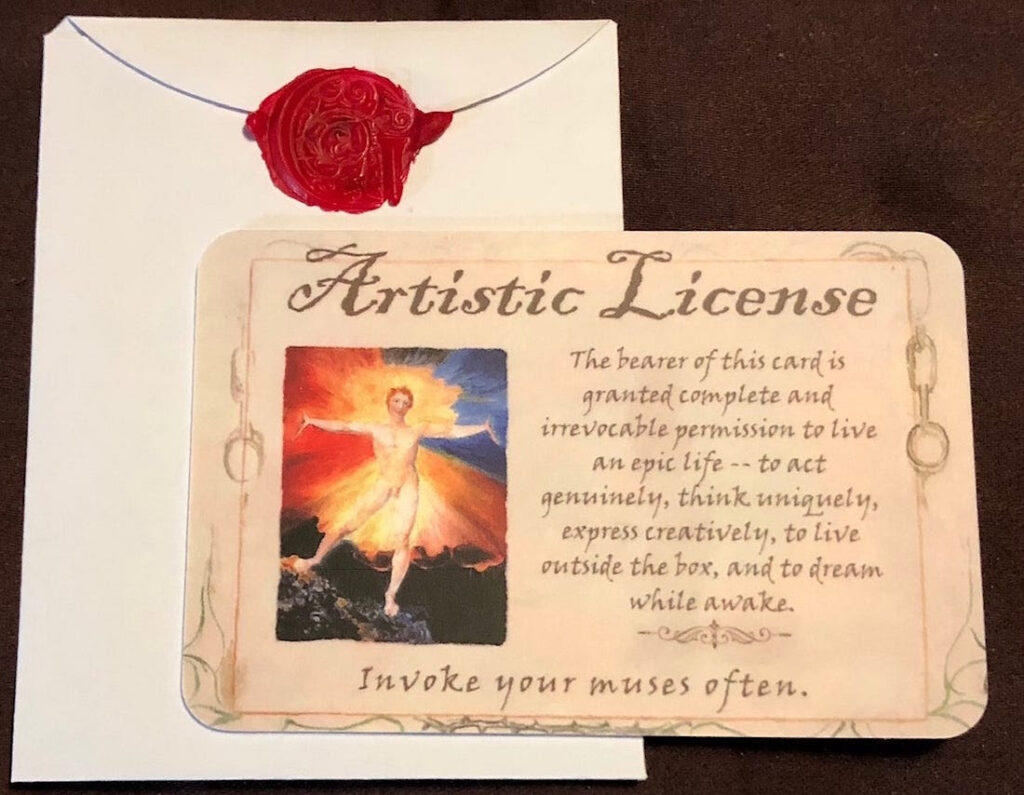
I created this Artistic License years ago and have been selling them every holiday season. I hear from people all the time that they still have theirs in their wallet and get a kick out of it when they encounter it. Come on, admit it, we all want to feel like we have artistic license. I sell them for $5 each, postpaid, or 5 for $20 (pp). Foreign orders require the exact shipping cost. Message me at garethbranwyn@mac.com if interested.
Your Chance to Win a Flashlight!
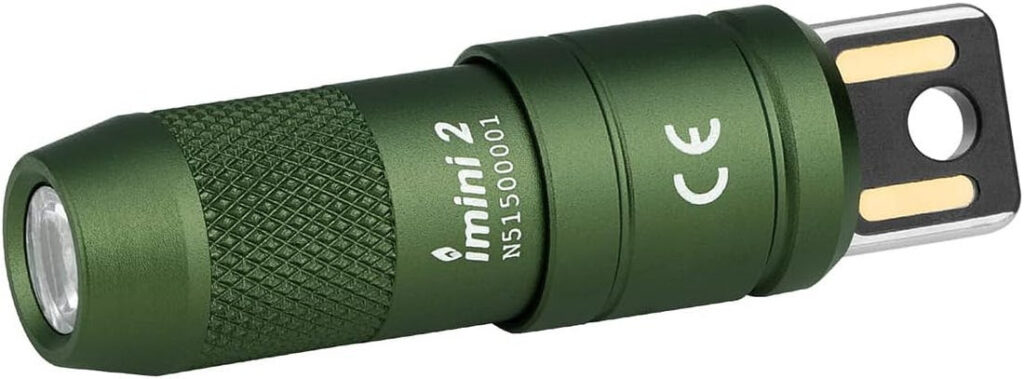
I was so intrigued by the Olight iMini flashlight that Chris Notap recommended above that I immediately bought one, and man, is it a cool little bit o’ kit. It’s everything he says and more. Every keychain (and home, car, boat, shop) needs one. So, I decided to give three of them to newsletter readers!
Here’s how it works:
- Every existing newsletter subscriber will get one entry in the drawing. Paid subscribers will bet two entries.
- For everyone who brings on a new subscriber, you’ll get one drawing entry for each new signee (just email me the addresses they used to sign up).
- For everyone that upgrades to a paid subscription, you will get three entries.
I will do the drawing on Dec 16th and have the lights direct-shipped immediately. I can only mail to US subscribers. If you are out of the country and you win, I will send you a PDF copy of my book Tips and Tales from the Workshop, Vol. 2.
12/12/2511 December 2025
Sun-powered Africa/Vietnam Trains/Travel Laptop Mic
Nomadico issue #183
Solar Power is Growing Like Mad, Especially in Africa
While some regressive political figures look at clean energy with scorn instead of seeing it as the key to abundance and growth (like China does), the advance of solar power worldwide is astounding by almost any measure. Nowhere is this more evident than in Africa, where solar has leapfrogged development in regions the top-down, fossil-fuel-powered electric grid never reached. See this article on how Africa is building the future by skipping the past. Here’s an interesting stat from it to chew on: “[The cost of] Solar panels dropped 99.5% in 45 years. What if we’re only halfway through?”
A Guide to Rail Travel in Vietnam
James Clark of Nomadic Notes has several websites and newsletters about Southeast Asia. He has probably traveled on more trains in the region than anyone else and now has a site focused just on that aspect of travel in his adopted home base country. Check out Rail Vietnam if you will be moving around Vietnam and want to avoid the roads. He says, “This guide covers every train line in Vietnam, station information, and how to buy tickets.”
Afternoon Drinks in Thailand
If you’ve ever tried to buy beer at a 7-11 between 2:00 and 5:00 p.m. in Thailand, you probably a) been turned away and b) left very confused. A law dating back to 1972 has been in place all that time as a nanny state move to keep government office workers from sneaking out for a drink. For the next 180 days at least, in a move to boost tourism, there are no restrictions between 11:00 a.m. and midnight. See the details here.
Portable Mic for the Road
I do a fair number of interviews and video calls when I travel that require good sound quality, but I don’t want to pack the big microphone I use in the home office. Back in March I ordered this small mic that just plugs into my laptop USB port and can then be moved around to face the front. At under $20 it’s not studio quality, but when paired with wireless earbuds it has been good enough for a couple of podcast appearances. It goes into a pouch and takes up almost no room.
A weekly newsletter with four quick bites, edited by Tim Leffel, author of A Better Life for Half the Price and The World’s Cheapest Destinations. See past editions here, where your like-minded friends can subscribe and join you.
12/11/2510 December 2025
What’s in my NOW? — George Kosmopoulos
issue #234
George Kosmopoulos codes mobility solutions at Cowboy in Brussels, with two kids and an artist wife – Mimi Kunz. Built unsuccessful apps, teaches web development, practices BJJ, and thinks a lot about resilient futures while drinking too much coffee. Currently wondering if any of this counts as building something meaningful.

PHYSICAL
- The collection of “The Culture” books by Iain M Banks – When reading a lot, one cannot re-read too much. This series though is constantly re-readable. It’s adventures from the perspective of an Utopia dealing with the rest of the universe. Somehow, the author manages to make adventurous stories in a variety of worlds and there’s always some depth to discover and ponder over.
- Micra Leatherman Keychain Multitool – This is the leatherman I have on my keychain. I thought it’d be mostly useless accessory that would make me look good and since then it has been used and overused.
- Haflinger Slippers – I’m running up and down my house with my kids in my arms and so I found that I needed solid slippers and these do the job. I never fall with them and I am always comfortable.
DIGITAL
- Bedtime mode on my Android phone – It’s like a reverse alarm for when I’m tired and somehow end up scrolling. My phone goes grey and tells me it’s time to go to bed.
- Connections – I love this game! It’s simple and smart at the same time and I play it every evening with my wife. When we have friends in the evening I take out pens and paper and we do it as a group
INVISIBLE
Finite games are played to win seriously with defined rules and endpoints, and infinite games are played for the purpose of continuing play itself with fun. — James P. Carse
Life is an infinite game, one of the only ones – the rest is finite games and you can always not play finite games.
Sign up here to get What’s in my NOW? a week early in your inbox.
12/10/2509 December 2025
Chihuly on Fire / Cursed Pirate Girl
Issue No. 95
GLASS ARTIST DALE CHIHULY PLAYS WITH FIRE AND THE AUDACITY OF BEAUTY
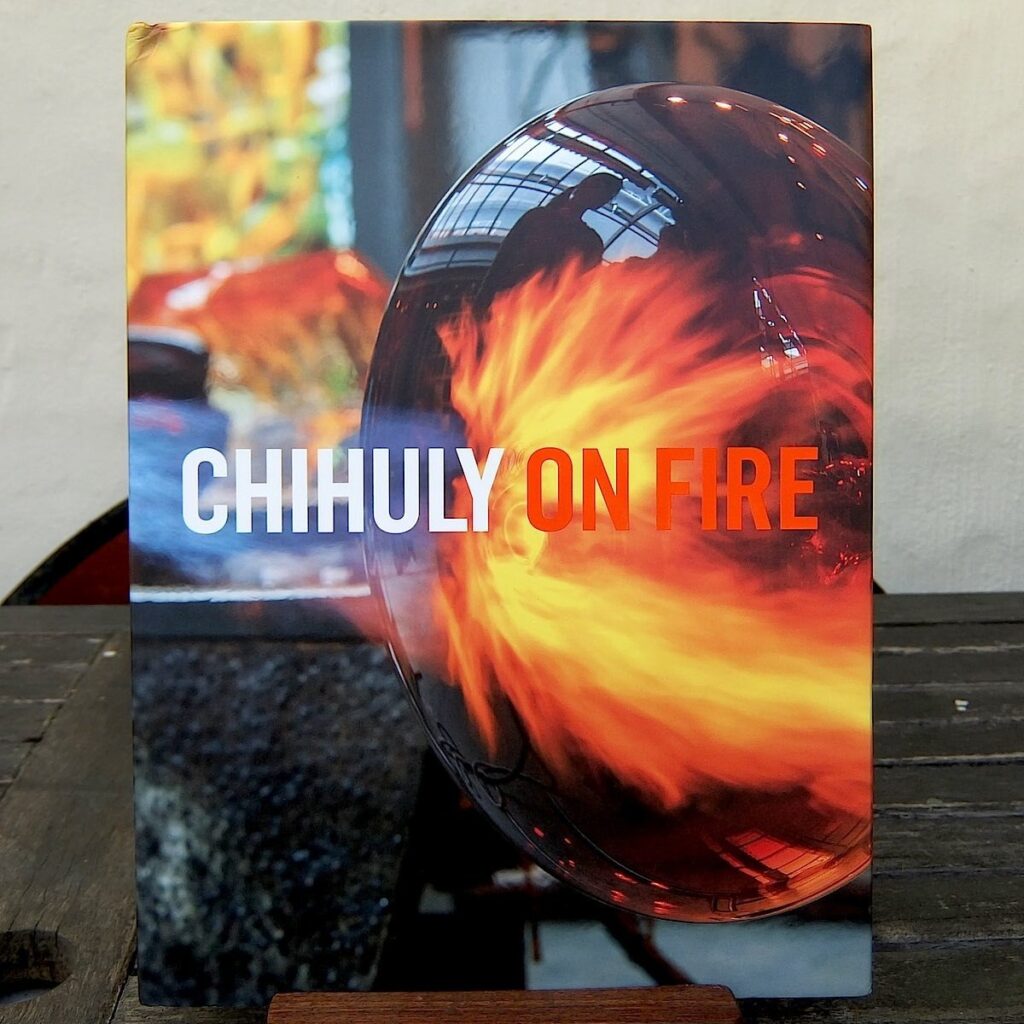
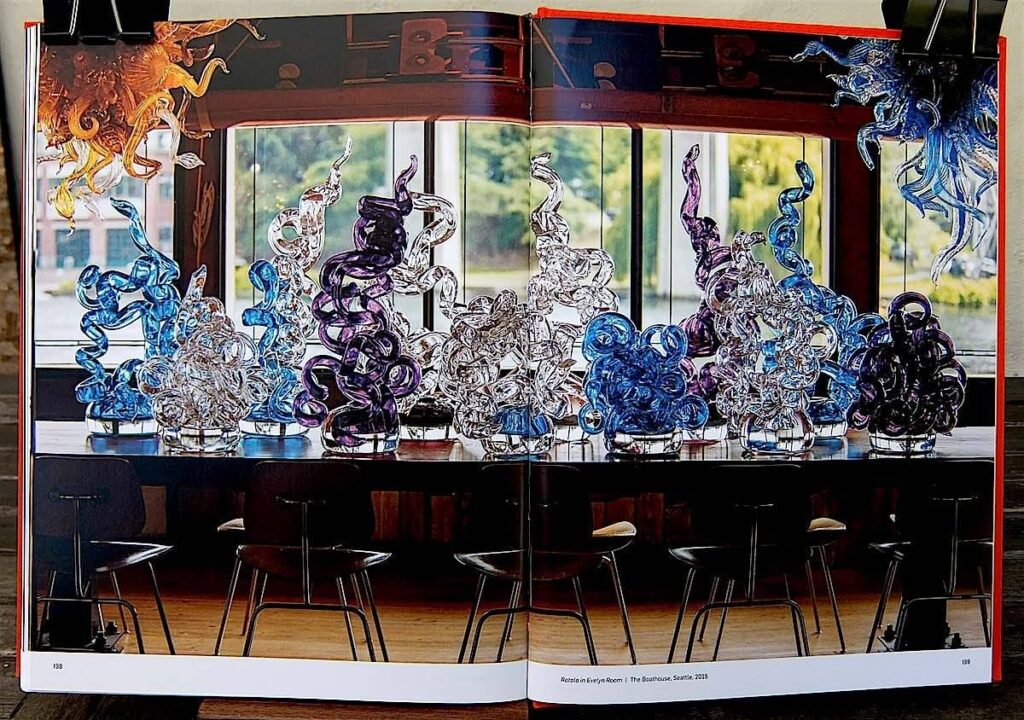
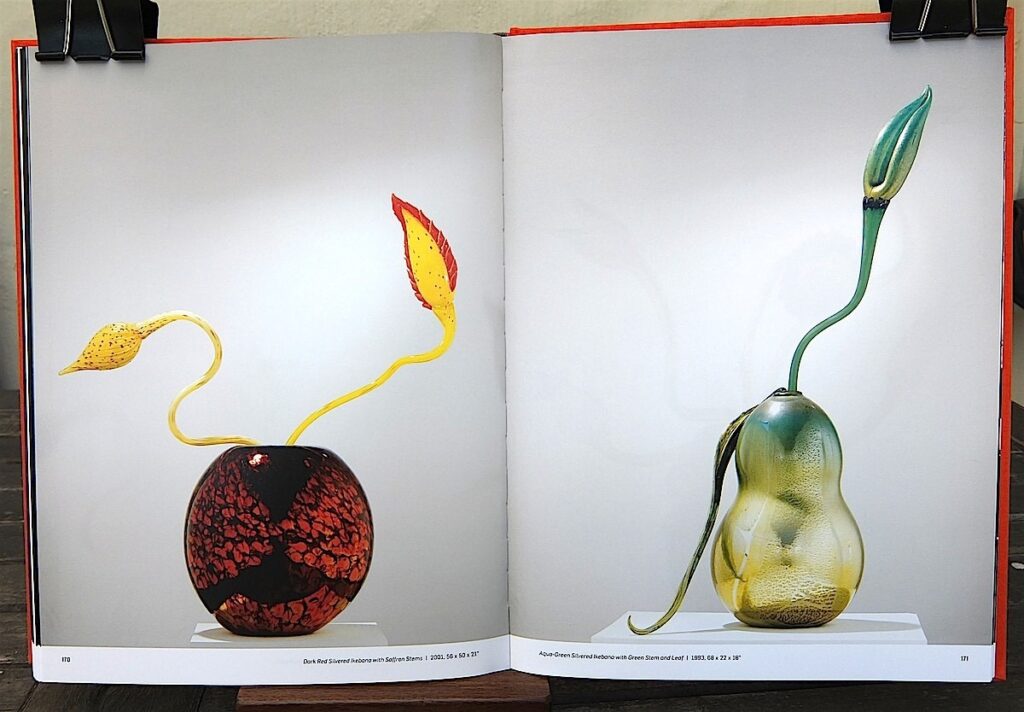
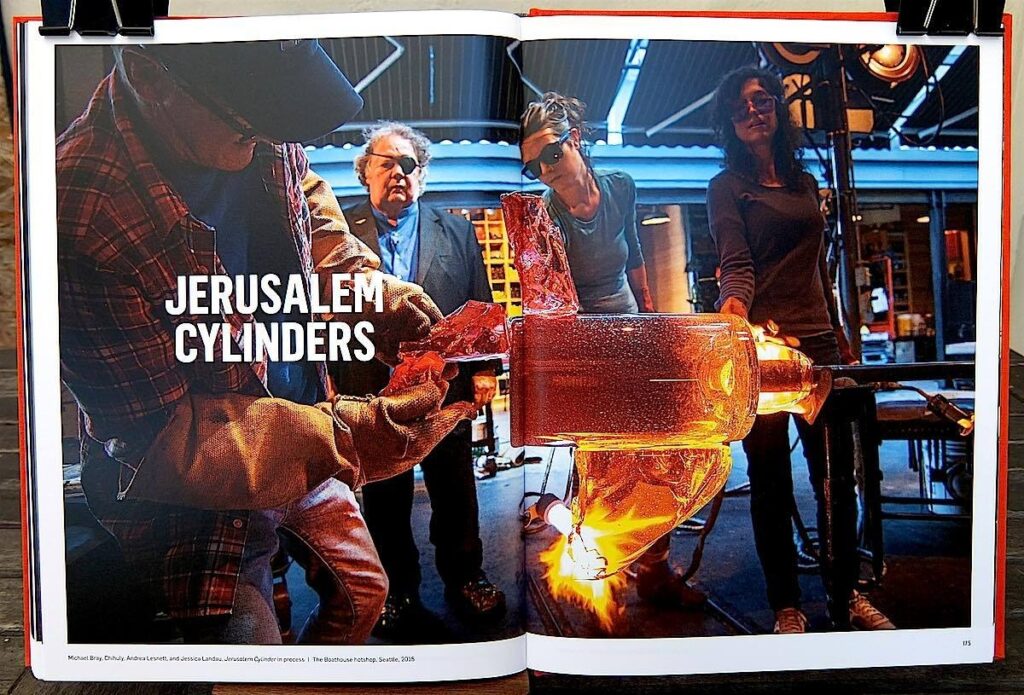

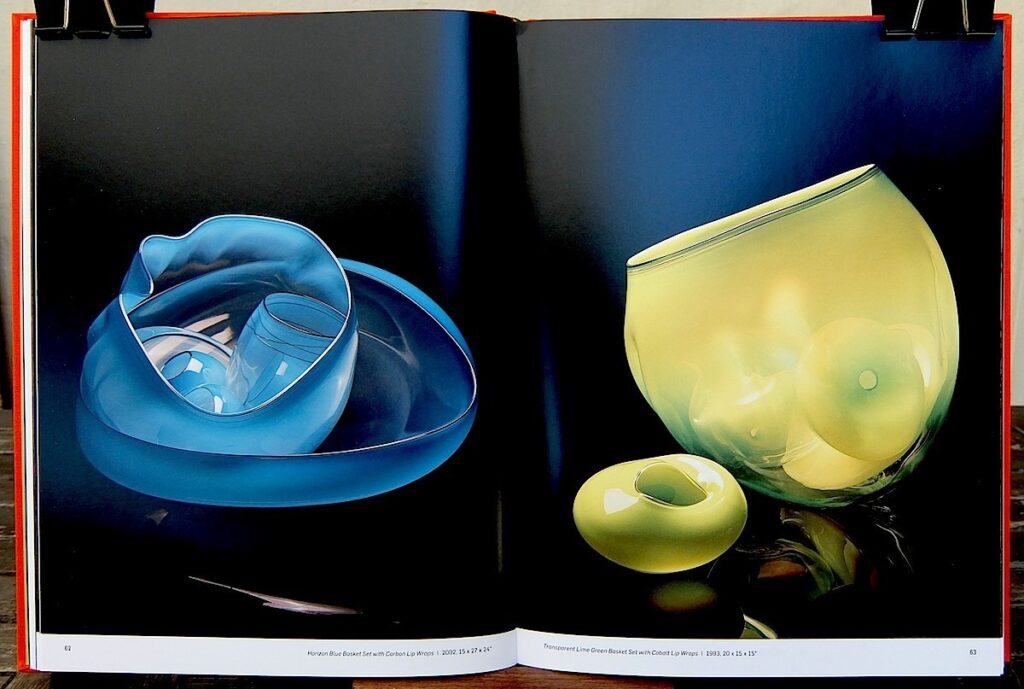
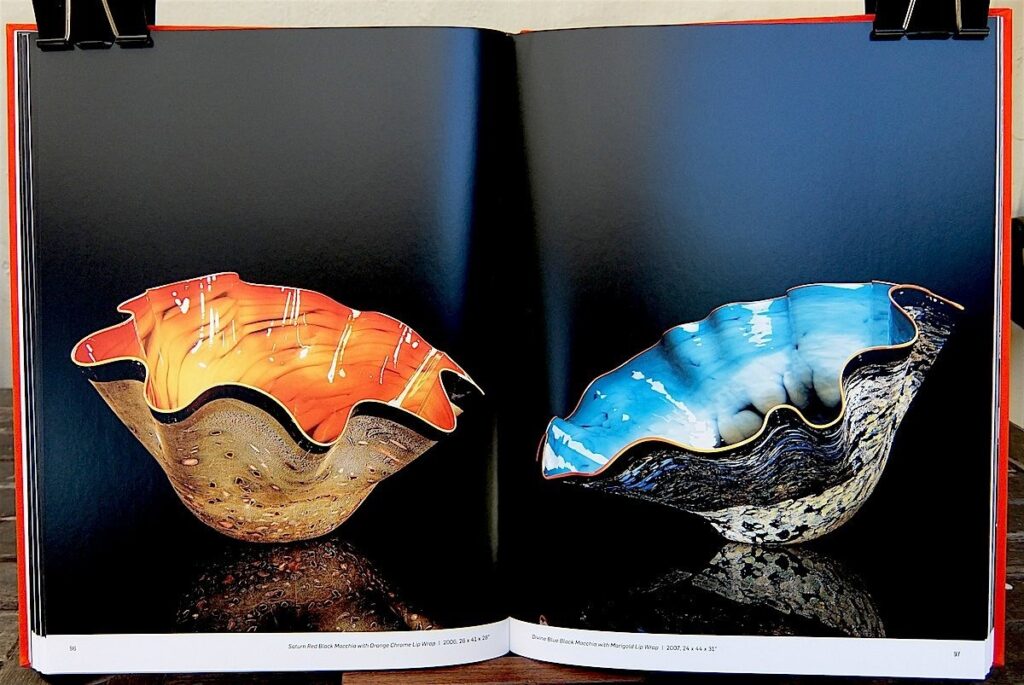
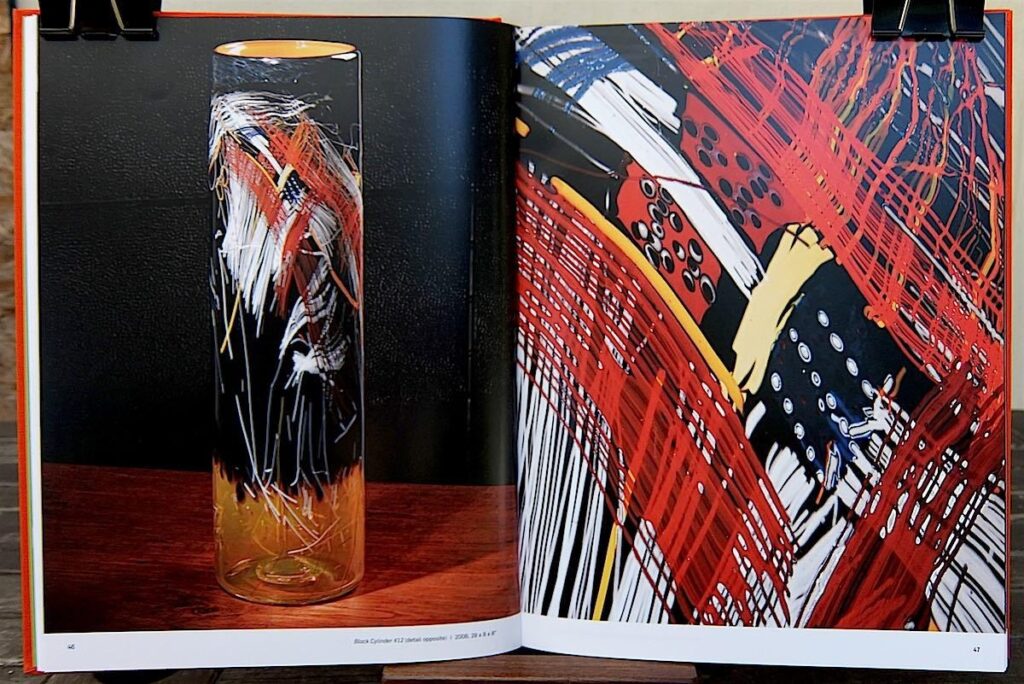
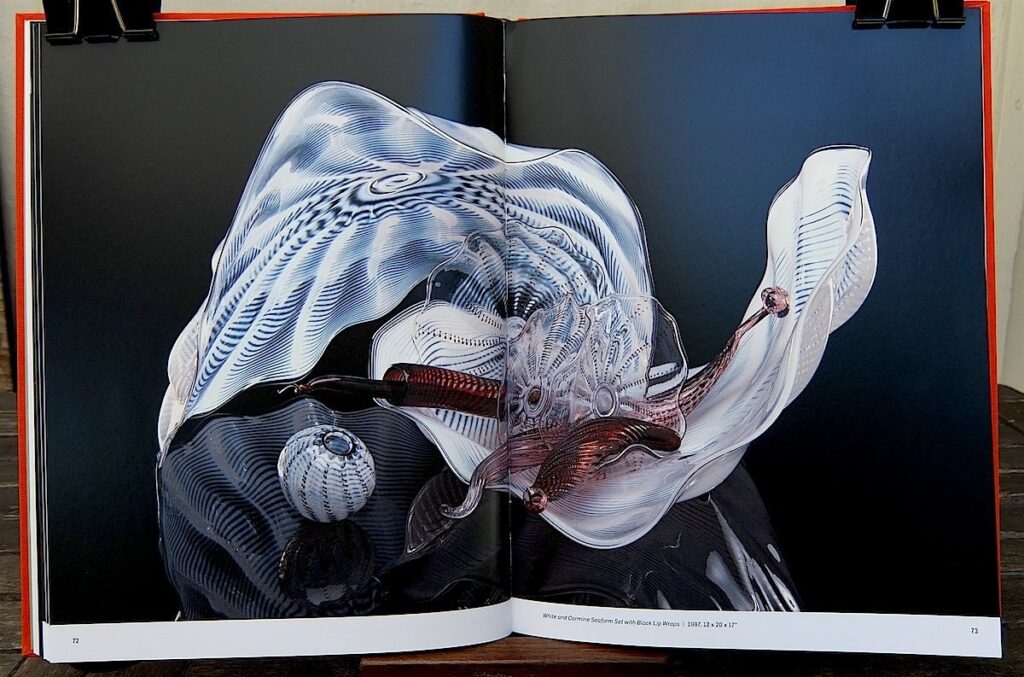
Chihuly on Fire
by Henry Adams (author) and Dale Chihuly (artist)
Chihuly Workshop
2016, 212 pages, 9.3 x 12.1 x 0.9 inches
For several decades now, art critics and casual admirers alike have talked about Dale Chihuly’s art in terms of its forms. Indeed, the artist himself organizes his work largely by their physical shapes, as does his latest self-published coffee-table book, Chihuly on Fire, whose chapter titles range from “Baskets” and “Sea Forms” to “Jerusalem Cylinders” and “Rotolo.” But thumbing the pages of this sumptuous, hardcover volume, and reading the biographical essay by art-history professor Henry Adams, one is struck by the importance of color to Chihuly’s work.
The shift to color began in 1981, when Chihuly and his team of gaffers and assistants produced the first of what would become known as the Macchia series. These often enormous vessels, whose sides were usually folded and deformed, featured solid-color interiors, lip wraps in contrasting hues, and thousands of “jimmies” of pure crushed colored glass, usually set against a background of white glass “clouds.”
Even in his early days, Chihuly’s ambitions for his chosen medium seemed larger than the modest network of glass-art galleries around the country would have the wherewithal to support. By the time his Macchia pieces came along, the so-called craft arts, of which glass art was but one, were allowed to be exuberant and even a bit zany, but they were ultimately expected to exhibit good table manners, to sit uncomplainingly at the kid’s table of the art world. Gloriously and unapologetically garish, Chihuly’s Macchia pieces were a grinning, joyful, and emphatic “fuck you” to all of that. With the Macchia, Chihuly finally shook off the cobwebs of craft, not so much because the pieces pushed the boundaries of technique to ludicrous places – although they certainly did that – but because they pushed what was possible, and politic, with color.
Today, technique remains central to Chihuly’s work, while his teams of artisans have become ever-more adept, as the 2013 photo in Chihuly on Fire of two assistants in helmeted, fireproof space suits preparing to catch a still-glowing piece dramatically shows. To be clear, it’s okay to be impressed by that sort of thing, to get sucked into the spectacle that is Chihuly. After all, lots of artists have made careers of astounding viewers with physical spectacle, as anyone who has walked within the rusty, leaning walls of a curving Richard Serra can attest. In a way, though, Chihuly takes the greater aesthetic risk by being brash enough to demand that his creations are also, well, beautiful. For that, color rather than form has been his most capable collaborator. – Ben Marks
CURSED PIRATE GIRL – A PAGE-TURNER FOR ITS SWASHBUCKLING STORYLINE AND IMAGINATIVE ILLOS



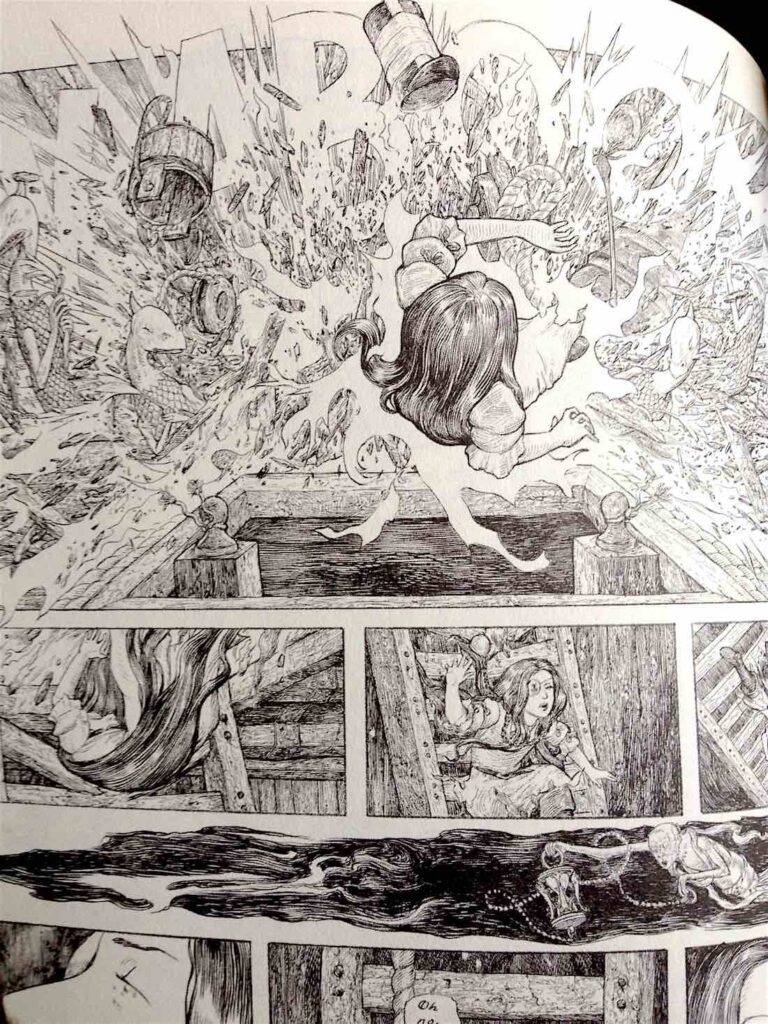
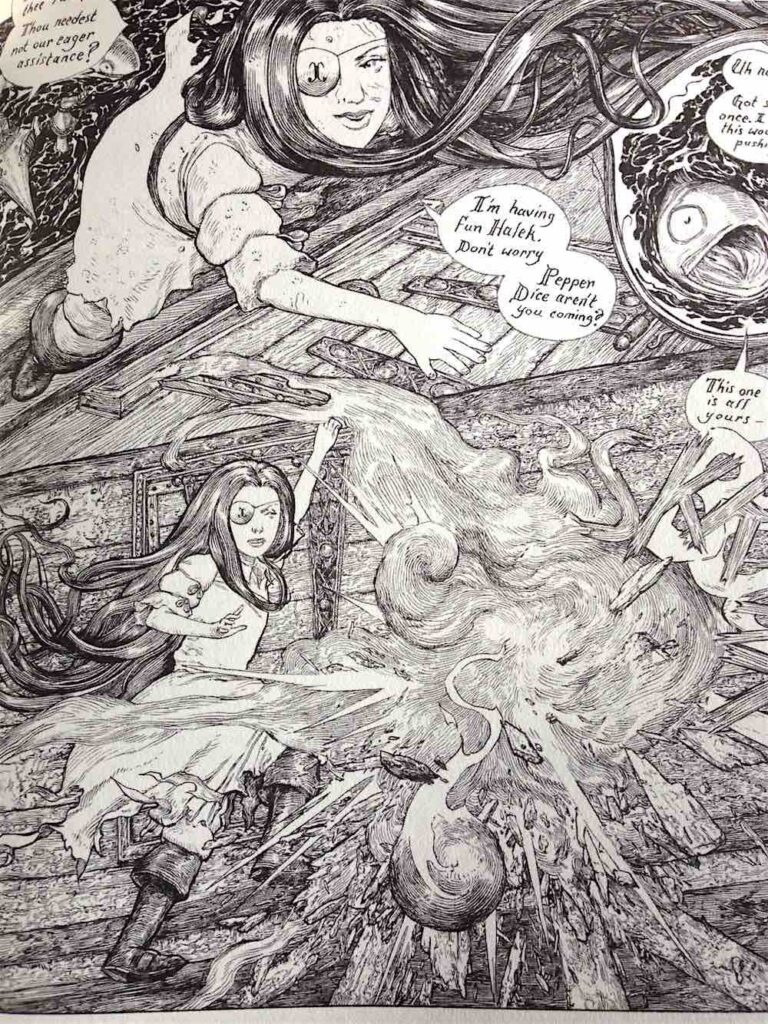

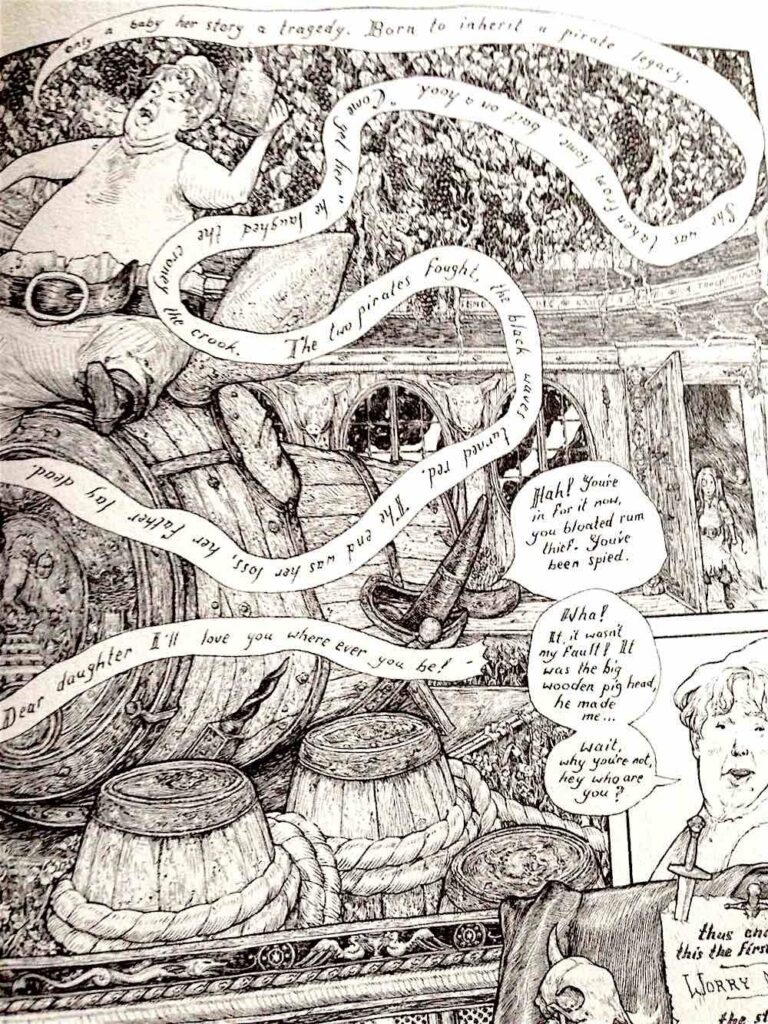
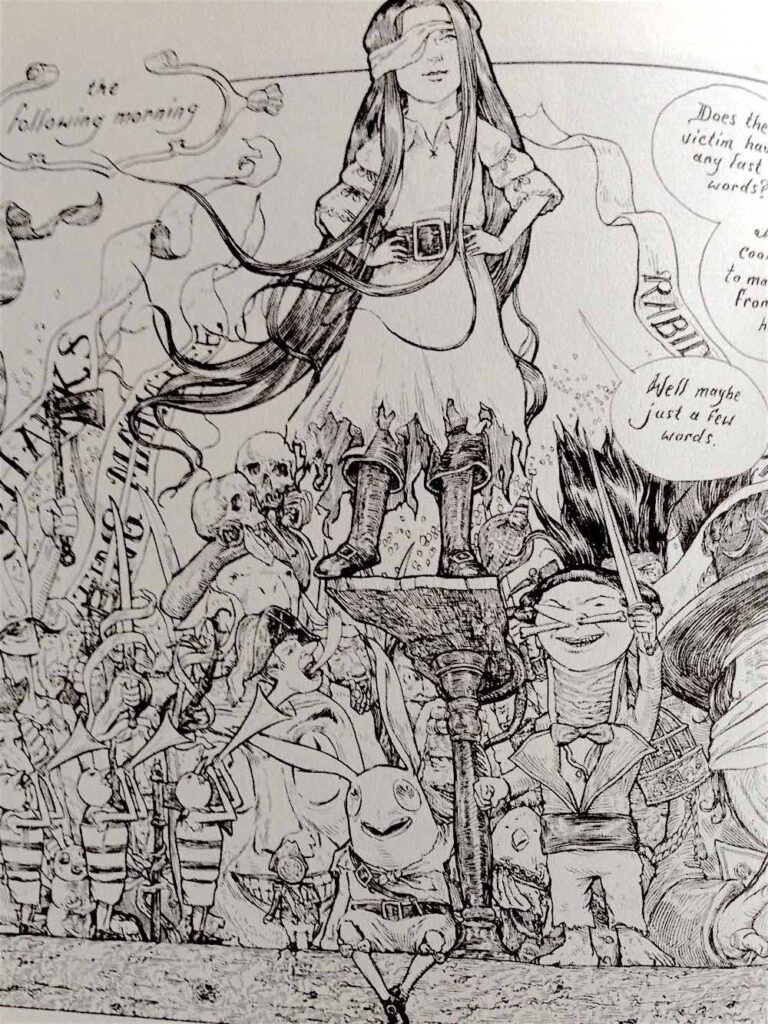
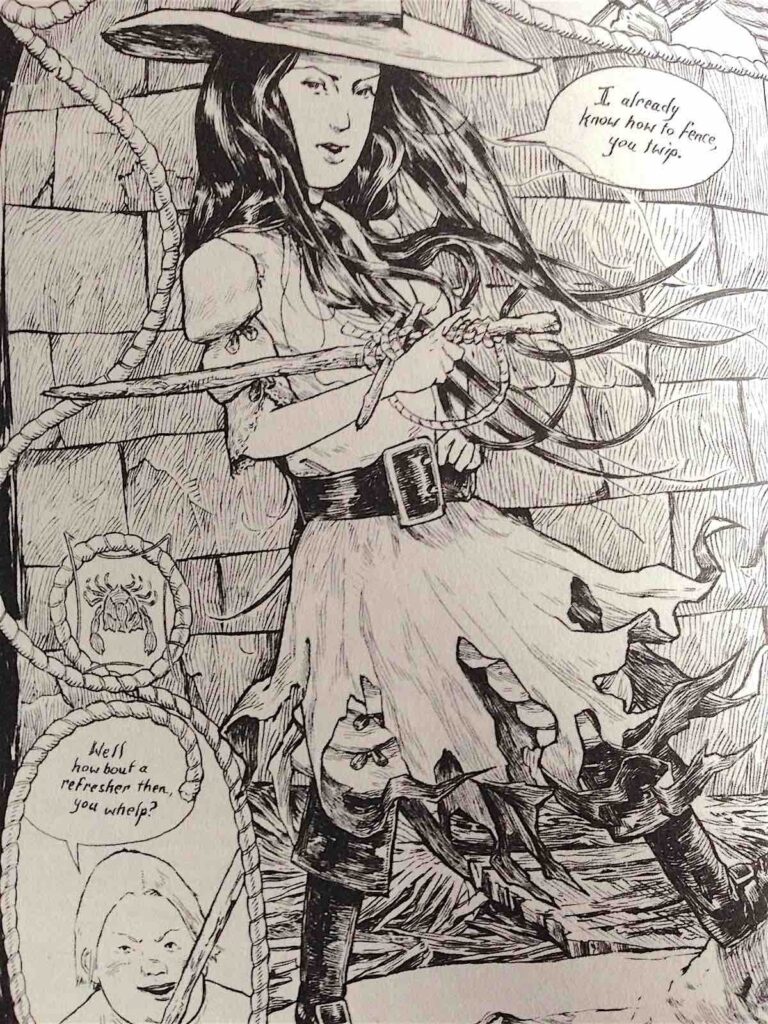
Cursed Pirate Girl
by Jeremy Bastian
Archaia
2016, 144 pages, 6.6 x 10.2 x 0.6 inches (softcover)
Cursed Pirate Girl, released in paperback this year, journeys in search of her missing father through the dangerous waters of the Omerta Seas in this ornate black-&-white graphic novel. An archetypical adventure tale with an odd cast of characters, Cursed Pirate Girl killed a sea witch’s five sons, who then placed an eternal curse upon her. On her journey, Cursed Pirate Girl encounters Apollonia, Apollonia’s haughty caregiver Mr. Six, a royal child with ringlets who suffers from hero-worship, pistol-packing Kildenny, Pepper Dice the talking parrot, Jacob the one-armed cook, sharks, talking skeletons, schools of sardines, armored swordfish, and many, many pirates of all shapes and sizes. She sword-fights, gets kidnapped, becomes locked below deck in a crowded pirate ship, rides an enormous fish, and walks a plank.
Featuring intricate line drawings created with a Yasutomo Grip 500 mechanical pencil and Escoda Series 1212 size 00 sable brush on Bristol paper, each panel bursts to overflowing with entwined octopus tentacles, delicate seaweed, crashing waves of sea spray, smoky cannon fire, grimacing skeletons clad in pirate garb, and churning clouds of winged sea creatures.
My only squabble with Cursed Pirate Girl would be that the print is fairly small, and details in smaller panels are excessively minute, but it’s nothing that a handy magnifier wouldn’t fix. Cursed Pirate Girl is a beautifully illustrated, thrilling adventure tale. It’s a page-turner for its engaging swashbuckling storyline as much as the imaginative illustrations. Marvel at the details. – S. Deathrage
Books That Belong On Paper first appeared on the web as Wink Books and was edited by Carla Sinclair. Sign up here to get the issues a week early in your inbox.
12/9/2508 December 2025
Baby Feed
Tools for Possibilities: issue no. 167

Tidy Snack Dispenser
Anyone with small kids knows about snack catchers; new parents should check them out. These ingenious cups let little fingers in to grab cereal bits, crackers, or dried fruit, etc, but won’t let food out when the cup tips over. The flexible rubbery (BPA free) flaps serves as a one-way gate. Keeps the food clean, car seats and floors tidy, and hungry toddlers satisfied. There are now other competing brands using the same principle. They also come in larger sized containers. —KK

Less air bottle
Even if you intend to exclusively breastfeed your infant, you may find you’ll need to supplement with a bottle occasionally. Or if father is needed to handle feeding duties when mom’s not around, you’ll need a bottle. For those times — or if you are bottle feeding all the way — Dr. Brown’s Baby Bottles are the only bottles you’ll want to use. We found these Bottles to be absolute lifesavers, and have recommended them without hesitation to other new parents who have immediately confirmed our experiences with them: less gas, colic and other feeding-related unpleasantness.
The secret to Dr. Brown’s Baby Bottles, apparently, is the tube system inside — it prevents the infant from swallowing air, which makes for a happier baby (and by extension, happier parents). As baby eats and the bottle drains, the internal tube directs incoming air to above the bottle contents, so the young one’s not working against a vacuum. This is supposed to be easier on their eardrums, too. Make of it what you will, but we’ve managed to avoid the ear-infection boogeyman which seems to hit nearly every other young family we know. Also, unlike similar systems that use collapsing bags to keep out the vacuum, you don’t need to keep a supply of the little bags around.
The only downside I can see to Dr. Brown’s Baby Bottles is that there are more parts to clean – the nipple, ring, rubber disk/valve and rigid tube inside. (The FAQ says you need to use their nipples. We never tried any others when we were using them so I don’t know if you can use others.)
Our kids were about 90% breastfed (the last 2 of our 5 kids didn’t use bottles at all), but we used these bottles extensively when we were sharing feeding duties or had to supplement with formula. A co-worker who tried them on our recommendation came back the very next morning — nearly in tears — thanking me. The bottles are available in 2, 4 and 8 oz. sizes. — James Quinby

A teaching cup
We discovered this cup when our second child was having problems gulping from a spouted cup or bottle causing her to choke and vomit. A Doidy cup was suggested and it immediately solved the problem, as she could suddenly see what she was doing.
With our third child we have used them since starting him on solids, and they are also much easier for the parent or caregiver who is feeding the child to see what they are doing. I even hear good reports of this being used to top a newborn up with milk whilst breastfeeding is still establishing. A fantastic, if simple, idea. And they come in lovely jolly colours too; my son is particularly fond of his pink one! — Nathalie Marshall

Rollable, portable kid’s placemat
I am a grandmother who enjoys taking her grandchildren out to eat. Many times I’ve wanted to push the booster seat or high chair (without the tray) up to the table, cut the food up, and serve it to my grandchildren on the table with me. This tiny diner placemat covers the table and provides a clean eating surface that also catches spilled food, and has been my favorite take along tool.
It rolls up and fits in my purse, washes off easily, and helps me control the cleanliness of my grandchildren’s eating surfaces. I have seen disposable models, however they do not have the trough for spilled food, and are not re-useable and therefore more expensive. I have used this mat for 2 years, and take it with me anywhere I take my grandkids.
[This mat is made out of a material called Thermoplastic Elastomer (TPE) and is a non-latex, non-PVC, non-phthalate, non-BPA material.] — Constance Smith
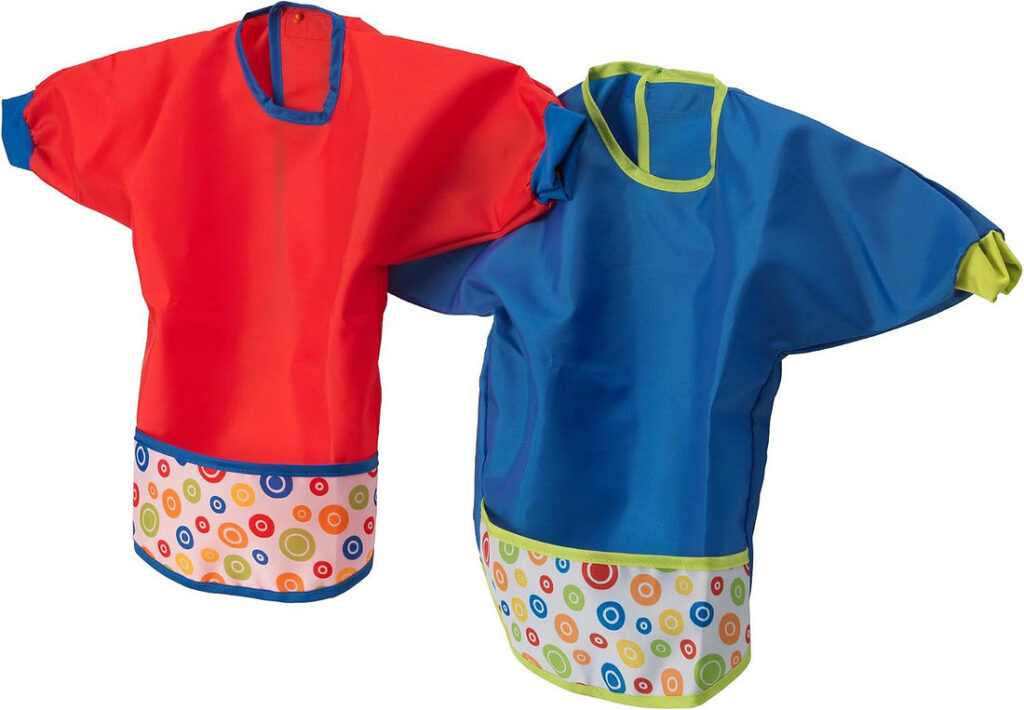
Better bibs
I’ve been using these bibs for over a year, and they are the best of the dozens I’ve had and the only ones I use now. They are cheap; a pack of two costs $5. They go on easily with a sturdy velcro closure on the back. I’ve washed them countless times and they’re still like new. The long sleeves and total coverage keep clothes 100% clean.
They are water repellant and even have a flap on the bottom to catch stray food and liquids. They can be wiped clean of small messes with a wet sponge and be ready for reuse right away. For big messes they can be taken off inside out to contain the spill. I always keep some in my bag and find them to be one of the things I can’t go without.— Maria Piccolo

Infant food catcher
The humble bib, a highly functional item that (usually) keeps a baby’s clothes from getting splattered with food, has been around a long time without too many major improvements. Until now. Bibs made of non-porous, moldable, resilient silicone are a real step forward. The key features of the one we have from BabyBjörn are its shape and washability. The bib projects outward and terminates in an upward scoop, which not only covers more of the lap, but also catches and collects most dropped food that would miss an ordinary bib. So food that falls in it needn’t be wasted; it’s easy to spoon food out of it and back into the baby’s mouth. We used to have several cloth bibs in regular use, which we rinsed out after each use and hung to dry. We had one oilcloth bib that was better than the others in that it rinses off fairly easily and dries quickly. But the silicone bib has replaced them all, because it rinses off with supreme ease, has no seams to catch crud, and is dry almost immediately. Although a quick rinse is sufficient, clean freaks can also put it in the dishwasher. It attaches around the baby’s neck easily and securely, with a fastener integral to the bib, of the same material. There’s an ocean of cuteness in the world of baby gear, but dealing with an infant or a toddler is made more manageable by functionality, not gear decorated with adorable pink butterflies. This bib really makes life easier. — Michael Wilmeth
12/8/2507 December 2025
More Gifts
Recomendo - issue #491
Personalized rolling pin
Inexpensive laser engraving can produce personalized rolling pins which make great gifts. A pattern is etched into the wood so that it stamps the pattern on the dough before baking. Today on Etsy, you can get many folk patterns etched into rolling pins. Several years ago we got our daughter a rolling pin personalized with her name: it says “Homemade by Kaileen”. The roller is made in Poland and the crafts family is still going on Etsy. — KK
The ultimate free pass
Here’s a free gift to give yourself and your friends: a library card. Beyond books, it can give you free access to museums, zoos, gardens, events, streaming services, and more. This guide provides a state-by-state breakdown of what your library card gets you — from free NYC Culture Pass access to the Met and MoMA to vehicle passes for state parks to performing arts tickets. — MF
Rubber stamp art
Rubber stamps are fun for kids and adults. We make thank-you cards, holiday notes, border art, and mail art with small rubber stamps and colored ink pads. My favorite set of stamps is Stamp Bugs ($26), part of a series which includes Stamp Garden and Jingle Stamps. There are 25 wooden backed stamps holding parts of an insect like legs or antenna or wings, which you combine in infinite ways to make bugs, creatures, robots, or anything at all. The other sets give you additional parts and options, and any of them are perfect gifts. (The sets come without ink pads.) — KK
Quiet, Affordable Rock Tumbler
I bought this National Geographic Platinum Series Ultra Quiet Rock Polisher Kit as a gift for my husband last Christmas, but it ended up becoming a gift to myself. Over the past year, I took up rock hounding, and this kit included everything I needed to start my new hobby of rock tumbling. It’s one of the more affordable and genuinely “quiet” tumblers available for beginners. We keep it in the laundry room, and it’s quieter than our washer and dryer—which is ideal, since getting through a load of rocks requires the machine to run for a month straight. — CD
Laundry anywhere in minutes
The Scrubba Wash Bag is a 5.3-ounce hand-powered washing machine. Add water, soap, and a few items of clothing to the waterproof bag, seal it, and start rubbing. Rubber nodules inside the bag gently scrub the clothes. It folds to pocket size. Not as thorough as an actual washing machine, but better than hand-washing in a hotel sink. — MF
Deep-cleansing Facial Brush
For a thoughtful self-care gift, I recommend the FOREO LUNA 4 go Face Cleansing Brush & Firming Massager. I use mine daily. Its one-minute cleanse deeply exfoliates and softens my skin, and the gentle vibrations help me relax and feel refreshed, especially in the mornings. It’s smaller than the palm of my hand, and one charge lasts up to 300 uses—so it travels everywhere with me. Right now, it’s on sale on Amazon. — CD
Sign up here to get Recomendo a week early in your inbox.
12/7/25ALL REVIEWS
EDITOR'S FAVORITES
COOL TOOLS SHOW PODCAST
WHAT'S IN MY BAG?
10 December 2025

ABOUT COOL TOOLS
Cool Tools is a web site which recommends the best/cheapest tools available. Tools are defined broadly as anything that can be useful. This includes hand tools, machines, books, software, gadgets, websites, maps, and even ideas. All reviews are positive raves written by real users. We don’t bother with negative reviews because our intent is to only offer the best.
One new tool is posted each weekday. Cool Tools does NOT sell anything. The site provides prices and convenient sources for readers to purchase items.
When Amazon.com is listed as a source (which it often is because of its prices and convenience) Cool Tools receives a fractional fee from Amazon if items are purchased at Amazon on that visit. Cool Tools also earns revenue from Google ads, although we have no foreknowledge nor much control of which ads will appear.
We recently posted a short history of Cool Tools which included current stats as of April 2008. This explains both the genesis of this site, and the tools we use to operate it.


